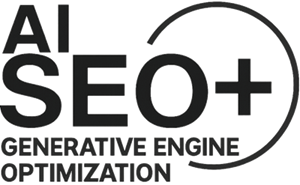Top 10 Digital Marketing Trends to Watch in 2025–26

In this blog, we break down the top 10 digital marketing trends that will shape the future. Whether you’re a business owner, marketer, or agency, these insights will help you align your strategy for better results in the years to come.
1. Generative AI Becomes a Core Marketing Engine
By 2025, generative AI tools like ChatGPT, Jasper, and Gemini will move beyond experimentation and into the mainstream. From content creation and SEO optimization to chatbot automation and ad copy generation, AI will power everything.
- Marketers will automate 70–80% of content production tasks.
- AI will be used to test headlines, CTAs, and design elements in real-time.
- Brands will need ethical guidelines and human review processes to maintain trust.
2. Voice Search and Conversational Marketing Will Rise
With the growth of smart speakers, AI assistants, and voice-enabled apps, voice search will dominate mobile and local queries. Marketers must optimize for natural language, long-tail keywords, and FAQ-style content.
- “Near me” voice queries will see significant growth.
- Conversational bots and voice commerce will offer seamless customer journeys.
3. Search Shifts Toward AI-First Platforms
Platforms like ChatGPT, Perplexity, and Gemini are changing how users search. Instead of ten blue links, users get AI-generated answers and summaries. This shift demands a new strategy: Generative SEO (GEO).
- Brands must optimize for citation in AI-generated content.
- Structured data, topical authority, and natural language content will be key ranking factors.
4. Zero-Click Content and Featured Answers Will Dominate SERPs
Google and Bing continue to enhance their ability to answer queries directly on the search page — no click required. To stay visible, marketers must create content that’s brief, valuable, and structured for snippets and summaries.
- Featured snippets, knowledge panels, and “People Also Ask” boxes will get more traffic share.
- Focus on schema markup, FAQ content, and clear definitions to win these placements.
5. Hyper-Personalization Powered by First-Party Data
With cookies on the way out, businesses are shifting to first-party data strategies to deliver highly personalized experiences. AI helps create dynamic content, product recommendations, and email sequences tailored to individual users.
- Dynamic content blocks will replace generic website experiences.
- CRMs and CDPs (Customer Data Platforms) will play a central role in personalization workflows.
6. Short-Form Video Will Remain King
Short-form video content (TikTok, YouTube Shorts, Instagram Reels) is not going anywhere. In fact, it’s becoming essential for discovery, branding, and conversion across nearly every demographic.
- Authenticity and storytelling will outperform polished ads.
- AI-generated video scripts and voiceovers will streamline production.
7. Social Commerce Will Explode Across Platforms
Social platforms are increasingly integrating shopping features. From TikTok Shop to Instagram Checkout, social commerce blends engagement with direct sales — reducing friction and increasing conversions.
- In-app purchases and influencer collaborations will drive revenue.
- Shoppable live streams will become a major growth channel in 2025–26.
8. Data Privacy and Ethical Marketing Take Center Stage
Consumers are demanding more transparency. As data privacy laws like GDPR and CCPA tighten, marketers must shift toward ethical data use, clear opt-ins, and transparent tracking practices.
- Trust will become a competitive advantage.
- Consent-based targeting and zero-party data collection will become standard.
9. Visual Search and Augmented Reality Will Enhance Shopping
Platforms like Pinterest, Google Lens, and Instagram are boosting visual discovery. Users can now take a photo or scan a product to get similar results, prices, and purchase options — blending search with experience.
- Brands should optimize image metadata and alt text for visual search.
- AR try-ons for clothing, glasses, makeup, and furniture will become the norm.
10. Unified Customer Journeys Across Devices and Channels
The marketing funnel is now non-linear. Users switch between mobile, desktop, voice, email, and in-store experiences fluidly. Marketers must use AI and automation to deliver unified experiences across every touchpoint.
- Omnichannel personalization will drive loyalty and LTV (lifetime value).
- Integrated dashboards and customer journey mapping tools will become essential.
Bonus: Sustainability and Purpose-Led Marketing
As Gen Z and younger millennials become dominant buyers, they care about a brand’s ethics, environmental stance, and social responsibility. Digital campaigns that support causes or highlight green practices will resonate more deeply with modern consumers.
How to Prepare Your Marketing Strategy for 2025–26
To keep up with these trends, digital marketers must rethink their tech stacks, content strategies, and customer engagement models. Here’s what to prioritize:
- Invest in AI and automation tools for content, analysis, and personalization.
- Develop first-party data strategies for ethical targeting.
- Shift your SEO mindset from Google rankings to generative visibility (GEO).
- Reimagine video as your #1 storytelling format.
- Unify user experiences across every device and platform.
The Future Belongs to Agile Marketers
Marketing in 2025 and 2026 will be intelligent, automated, customer-first, and immersive. The brands that embrace innovation — and align with evolving user expectations — will lead their industries. Trends come and go, but the core of successful digital marketing will always be understanding your audience and delivering value with speed, relevance, and trust.
Are you ready to future-proof your digital marketing strategy? Start planning today by investing in the right tools, teams, and tactics. The earlier you adapt, the better you’ll perform in the future-first digital world.
